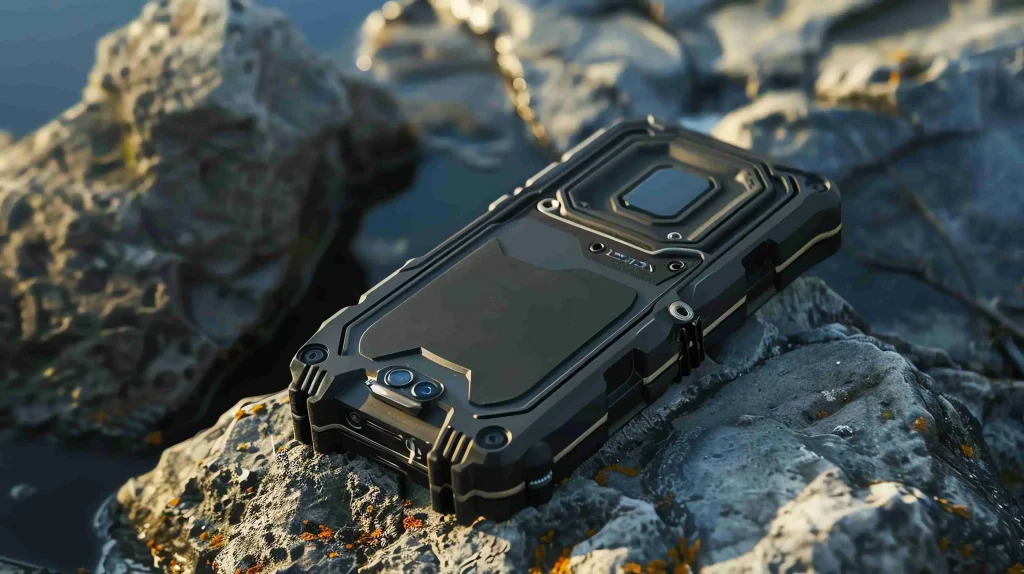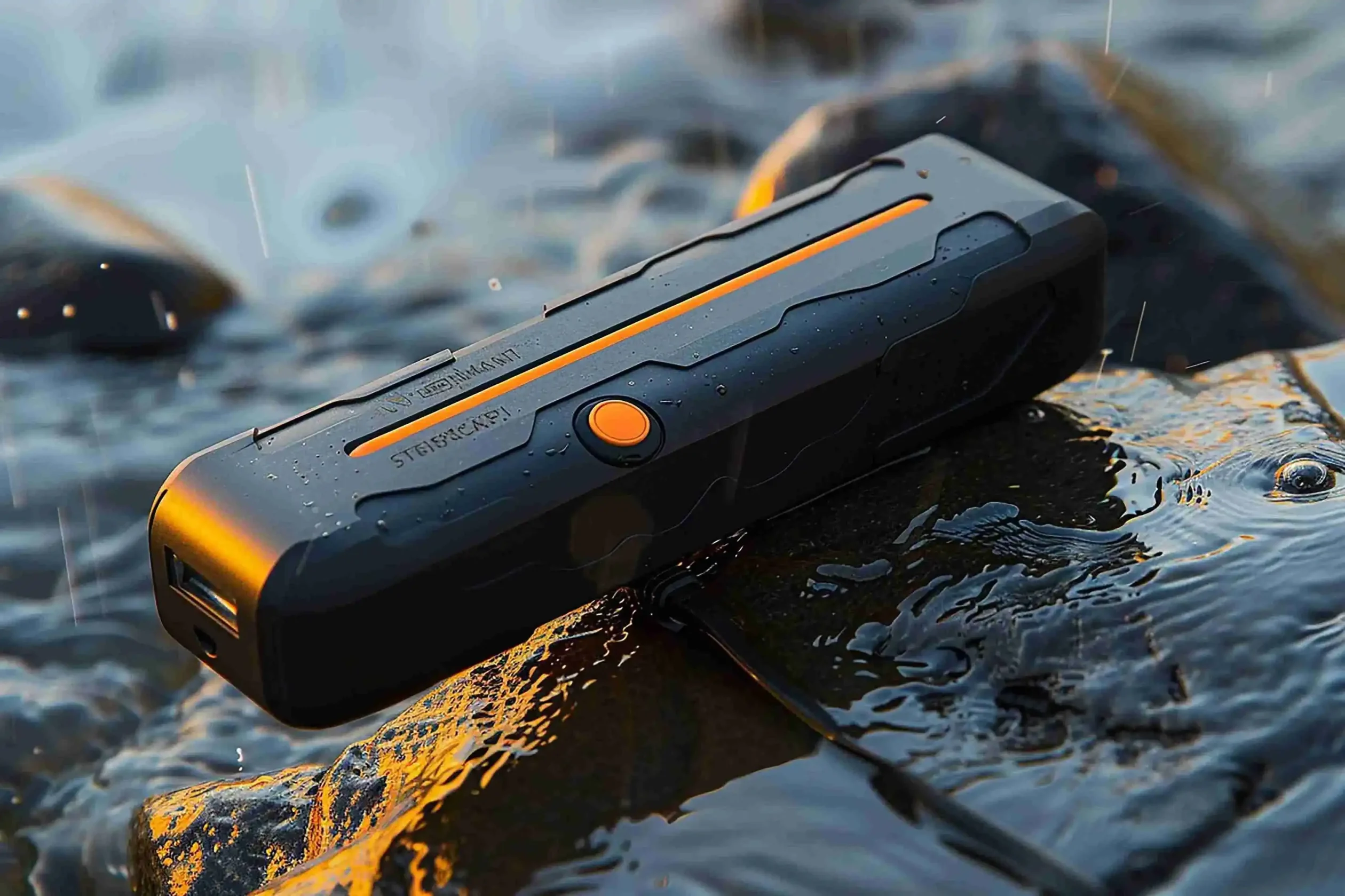Action cameras, such as the Insta360 GO 3S, have been an indispensable part of adventure seekers because of waterproof cases. But what is meant by those depth ratings? Most of the manufacturers boast of having products that can go 60 meters or even deeper. However, are they capable of doing as they promise?
The majority of the population is unaware of the fact that water pressure rises significantly with depth. Pressure doubles at only 10 meters, as compared to the surface pressure. Pressure is seven times higher at 60 meters. This involves a lot of strain on any waterproof case.
The Insta360 GO 3S is itself a little bit resistant to water. To do serious diving, however, you must have a good Waterproof Case Protective. Such instances put up an airtight wall between your camera and water.
How Waterproof Cases Actually Work
The Science Behind Water Protection
There are a number of methods of sealing that are used in waterproof cases to ensure that the water is kept away. The best ones have:
- Precision-engineered O-rings that compress to form watertight seals
- Reinforced construction at stress points
- Pressure equalization systems
- High-quality materials that won’t degrade in saltwater
Waterproof Case Protective units with high-quality materials are manufactured with special material combinations. The external cover is normally hard polycarbonate. The window through which the viewing is done is made of tempered glass with a range of 3-5mm. The medical-grade silicone is used as an internal seal. These substances combine to oppose stress, and they are clear.
The Waterproof Case Protective is produced with ABS plastic combined with transparent polycarbonate and tempered glass. This forms a great and distinct defense shell. The clear housing also allows you to view the status lights of your camera when you are diving.
Why Depth Ratings Can Be Misleading
Most consumers have a poor understanding of depth ratings. A 60m rating does not imply that you can safely go into the water and go down and up 60 meters now and then. These ratings are normally based on controlled lab tests of the static pressure.
In real diving:
- Sudden movements create extra pressure
- Saltwater is more corrosive than fresh water
- Temperature changes affect material flexibility
- Minor impacts can compromise seals
Testing the 60m Claim: What Science Says
Laboratory vs. Real-World Conditions
Waterproof case manufacturers do their testing under ideal conditions. They utilize clean water at constant temperatures. They put the cases in pressure chambers and leave them without movement.
Real diving is different. Water is moving. You’re swimming. The currents act in opposition to the case. These circumstances generate dynamic pressure, which is not considered by lab tests. Professionals suggest only half the rated depth of the case in order to be safe. A 60m Waterproof Case Protective should therefore be applied in the range of 30m to protect it with certainty.
What Happens at Extreme Depths
The water pressure is approximately 7 atmospheres at 60 meters. That amounts to 103 pounds per square inch pressing on all your parts. Any small imperfection is critical. It has a tempered glass that is resistant to pressure. The best materials are limited, though. The majority of leisure divers remain below 40 meters. Technical divers are considered to be the only divers to go deeper, and they are equipped with specialized equipment.

Real Diver Experiences with 60m Waterproof Cases
What Professional Divers Say
We interviewed a number of professional underwater photographers. They gave their experience of 60m-rated cases.
Sarah Chen is an underwater videographer, and she is sharing her experience with it: I tested the Waterproof Case Protective when shooting a coral reef documentary. It worked perfectly even at 28 meters. The camera shot beautiful footage with no water intrusion.
One of the divers stated: I have tried several brands, saying 60m depth. Only the best ones were able to survive repeated dives to 35m. None of them was long at real depths of 60m.
Another has been observed: The seals are the weakest point. O-rings become unelastic after five or six deep dives. Crystals of salt are locked in place and cause small holes.
Common Failure Points
According to Divers, the following were some of the common failure points:
- O-ring seating surfaces are getting scratched
- Latch mechanisms are wearing down
- Temperature changes cause material contraction
- Impact damage from accidental bumps
Even waterproof case protective units of high quality require periodic maintenance. Before every deep dive, O-rings are to be inspected and changed.
Proper Care for Your Waterproof Case
Maintenance Tips for Longevity
To maintain your Waterproof Case Protective in the correct state:
- Always inspect O-rings before use
- Clean with fresh water after saltwater exposure
- Store with latches slightly open
- Apply silicone grease to seals regularly
- Never force latches closed
Numerous failures occur due to the users not taking proper care of their cases. The slightest grain of sand may form an opening. Care is used regularly and prolongs your case to a large extent.
Testing Before You Dive
Always test your case before deep dives:
- Close the case with a paper towel inside
- Submerge in a bucket of water
- Squeeze gently to simulate pressure
- Check for air bubbles or damp spots
When 10 minutes later the paper remains dry, then your case will be good to dive. This is a very basic test to avoid the cost of damaging cameras.

Why Choose Our Waterproof Case Protective
The Waterproof Case Protective of Insta360 GO 3S cameras is made by Guangdong Shuowei Technology Co., Ltd. We have a factory that deals in accurate plastic products. We test all our products on military-grade standards (MIL-STD-810G).
Our Waterproof Case Protective has special features:
- Triple-seal system for extra protection
- Tempered glass that won’t fog up
- Pressure-tested beyond 60m in lab conditions
- ROHS and REACH certified materials
We realize that divers require quality equipment. That’s why we test every batch. Our cases are based on a factory with a warehouse of more than 4,000 square meters. We also guarantee 98% high quality and 99% on-time delivery.
Choosing the Right Depth for Your Needs
Recreational vs. Technical Diving
The majority of the leisure divers do not venture beyond 40 meters. The Waterproof Case Protective with a depth rating of 60m should be suitable for this depth. But do not forget to take care of it.
When you are diving with your camera, always have a good depth gauge. It is a common mistake for many divers to estimate depth. An electronic diving computer provides accurate measurements. This assists in keeping your Waterproof Case Protective safe.
Divers with advanced equipment are required to go deeper. The ordinary action camera cases are not made to go very deep. Take into account special underwater camera housings to be used in serious deep diving.
Alternative Options for Deep Diving
When you often make a dive that is more than 40 meters:
- Look for cases specifically designed for deep diving
- Consider professional underwater camera housings
- Use depth-rated action cameras instead of cases
- Consult with diving equipment specialists
Nothing can be better than to know your limits and the capabilities of your equipment.
Conclusion
When used properly, a 60m Waterproof Case Protective can be used for deep diving. However, it is important to note that there is a disparity between laboratory results and actual circumstances. It is always advisable to keep your case and prove it first. In the case of recreational diving to 30-40 meters, such quality cases as will offer great protection.
Always keep in mind that no case is timeless–change worn-out parts frequently. Shuowei Technology is a reliable manufacturer of protective gear that you can always rely on during your underwater activities (Guangdong). Make sure that you select good quality, then keep it well maintained, and then safely dive without worrying about the equipment you are using.
Frequently Asked Questions
Q: Will the case be able to dive up to 60 meters using a 60m waterproof case?
A: Yes, technically, but not in repeated diving. Professionals suggest half of the rated depth of cases. A 60m case is ideal in the case of dives that are up to 30 meters.
Q: What is the number of replacements that I should make regarding O-rings on my Waterproof Case Protective?
A: Check before every dive. Change either once a year or at the first signs of cracks, nicks, or being unable to bend. The frequency of replacement is higher.
Q: Why does my waterproof case get foggy?
A: Fogging occurs when the moisture becomes trapped. Please do not seal your camera and case without making sure that they are totally dry. Anti-fog treatments are found in some cases.
Q: What is the difference between water-resistant and waterproof?
A: Waterproof- This is total protection against water infiltration. Waterproof is only protective under special circumstances. Waterproof cases are really sealed with O-rings.
Q: How do I reason my case before diving?
A: Put a piece of dry paper towel in it, close the case, and put it in a bucket. Gently squeeze and look out for bubbles. When the paper remains dry after 10 minutes, then your case is ready to dive.


